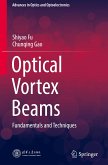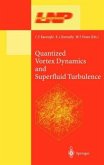Since it became possible to create electron vortex beams (EVB) in transmission electron microscopes (TEM) in 2010, it has been very important to understand their motion, in particular in the magnetic lens fields in a TEM. These doughnut shaped beams carry quantized orbital angular momentum as well as a quantized magnetic moment. These properties render them attractive for applications like particle manipulation and mapping magnetic moments on the atomic scale. Additionally there have been proposals to employ EVB in an electron spin polarizing quadrupole-Wien-filter. Standard electron imaging theory predicts that all electrons traversing the magnetic lens field in a TEM rotate with the same angular speed, which is the Larmor-frequency. Recently, it has been argued that EVB propagating through uniform magnetic fields parallel to the beam axis represent so called Landau states, which should show peculiar rotations, including no-, Larmor- and cyclotron (double-Larmor) azimuthal rotations. The aim of this work was to experimentally, as well as theoretically investigate EVB propagation within the magnetic field of the TEM objective lens. An additional goal was to simulate the above mentioned quadrupole-electron-spin-polarizer.


